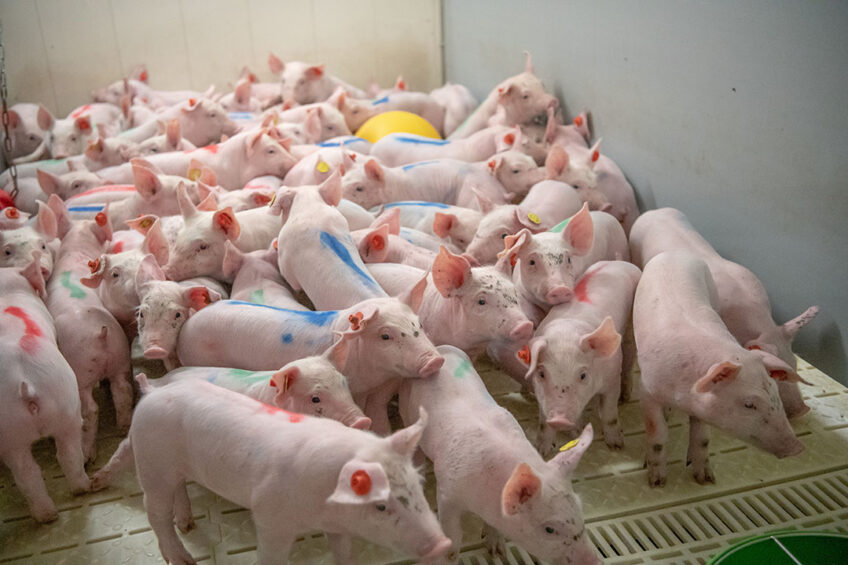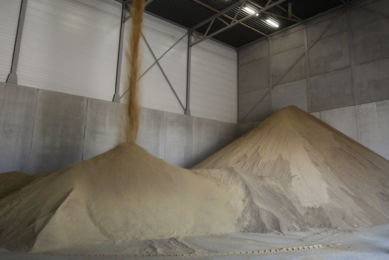Surviving to thriving – post-weaning challenges

When piglets have been weaned and start their career in the nursery, some seem to have a rough time these days. Now why would that be, swine nutrition technology expert Dr Casey Bradley wonders. Taking one step back might be just the right direction for US swine professionals, she says, to eventually get 2 steps further.
This last month at the International Swine Nutrition Conference a question from the audience sparked a great discussion for the panellist but also reflections on my part.
Context around the question was from a seasoned nutritionist that had stepped away from swine nutrition and now is back, but in the past formulated some of the best diets for nursery pigs. The question was centred around why do pigs start off so rough today in the nursery? This has been a debate and problem for the last 5-10 years that our industry has struggled with.
Is there more to it than genetics
The reality is that we now have a pig that doesn’t perform in the first 2 weeks but makes it up in the end. It was even mentioned that you can find genetics that perform exceptionally well in the first 2 weeks but end up cost you in the finisher period. But I may just have to disagree that we are only blaming genetics on this poor starting pig problem.
What are some possible correlations? Labour shortage is constantly coming up in discussions in the USA, not to mention the lack of husbandry skills in our labour pool. Or is it that we have removed most animal proteins from our diets? Or is it because we are chasing that lower feed cost and crude protein costs with synthetic amino acids. Dr Dean Boyd did remind us of the value of soybean meal and non-essential amino acids from soybean meal in our diets at the conference.
Problems are with the sow
But I am going to take a step backwards, because I do not think the problem is in the nursery barn or can be solved with nursery nutrition strategies. The problem is in the sow and our key performance indexes (KPIs) for our sow farm, nutritionists, and systems. Is it causation or correlation that our sow mortality and uterine prolapses are through the roof as well? Through genetics and management, we pushed for more pigs per sow per year (PSY) out the farrowing door and but not the market truck. I have even heard one of our largest integrators tell me that the old saying for every 1 pound (0.45 kg) of weight at weaning it equates to 2 pounds (0.9 kg) at the end of the nursery and up to 4 pounds (1.8 kg) at slaughter is just not true today in their system.
Where do we need to start?
I think the solution is to rip down the silo walls in our organisations and have the geneticist, veterinarian, nutritionist, production manager, and accountant to all work together on the entire system versus just their silos. Have we become too specialised in our skills that we do not have the internal capabilities any more to thrive as swine producers?

More about this topic: Last year, Pig Progress published a special edition full with the latest insights on weaning
Stop feed formulation on a least cost basis
My nutritional suggestions are to stop formulating on a least cost basis but best cost basis. We need to be like the ruminant industry and start evaluating colostrum quality and ensuring every pig consumes at least 250 g of colostrum at birth or more if we aren’t getting the right things into colostrum. We need to stop saying we can’t top-dress in gestation or run a 2nd feed line because we can’t justify the cost on the sow farm. We need to get our sow body condition in check, this constant roller coaster ride we put our sows on is not helping. Our main goal in sow nutrition should be to keep her tank full, have her reserves met, and optimise her offspring’s passive, innate and adaptive immunity before they leave her.
Of course, I could on and on about potential nutritional interventions, but the biggest thing is that we need to starting working as a team and setting our own KPIs that drive system wide profitability, rather than just our departments production bonuses.











